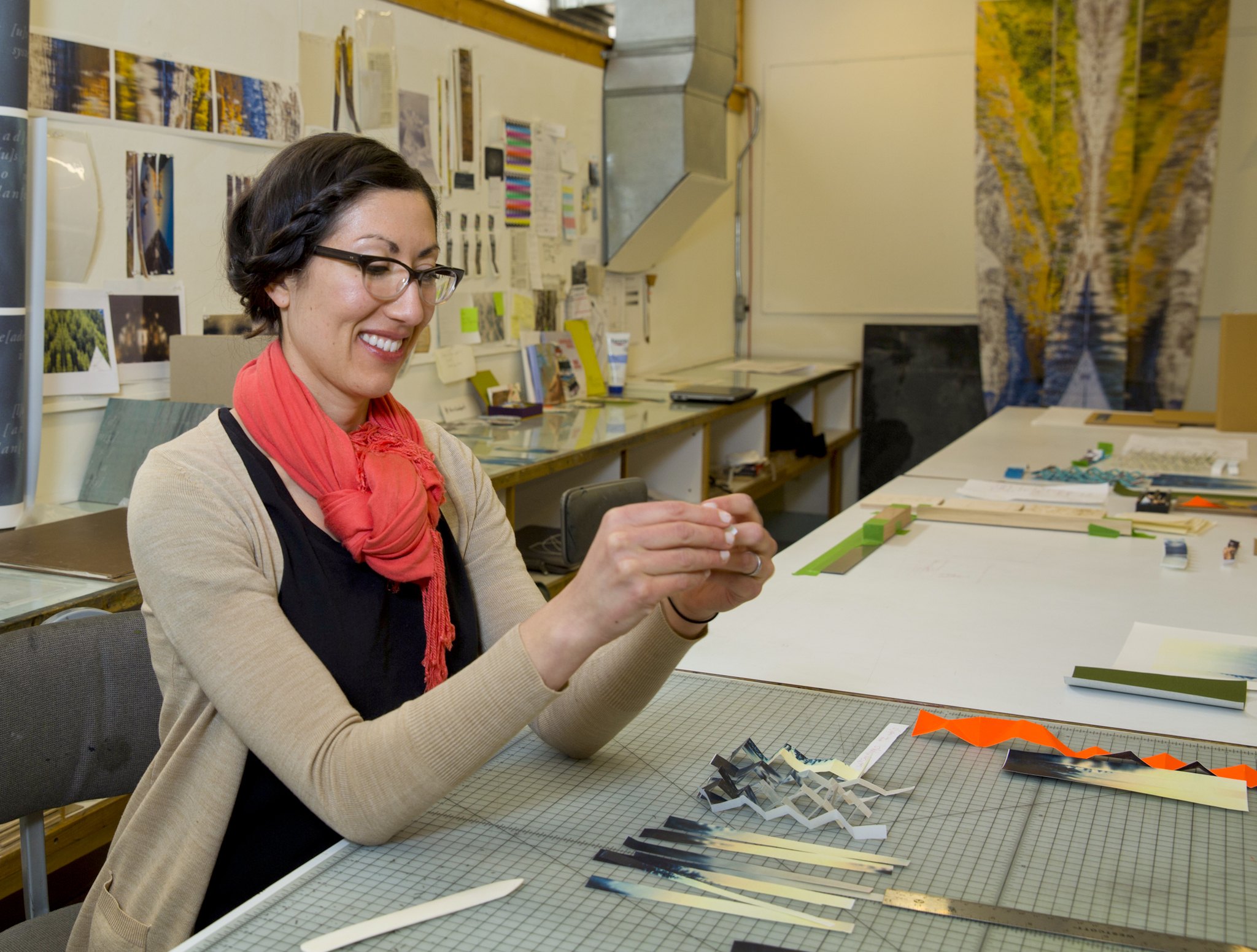From Nicole Pietrantoni’s frozen images of the arctic, to Dianne Kornbergs’ representations of nature’s evidence, the new San Juan Island Museum of Art exhibits are rooted in the natural world.
“These works both honor and question the creation of knowledge, employing visual allusions and poetic text to create alternate ways of understanding the ‘evidence’ before us,” said Kornberg.
Beginning Sept. 17, the museum welcomes Kornberg’s “For All We Know” and Pietrantoni’s “Hydrographs.” Both exhibits run through Nov. 28. SJIMA is open Thursday through Monday, from 11 a.m. to 6 p.m. Adults, 18 years and older are $10. Members and youth are free.
Dianne Kornberg
Kornberg lives and works on Obstruction Island. Her art often uses objects creatures have left behind, like feathers, shells, bones, nests and fur.
“I find natural artifacts visually and conceptually resonant, mysterious,” Kornberg said. “‘For All We Know'” is made up of oyster shells that she photographed in Willapa Bay.
“Abstracted into pure lines, these mounds (of oyster shells) of mortal remains become … lifeless landscapes,” Kornberg said, adding that the piece features excerpts from poet Elisabeth Frost’s poem “Gone,” a meditation on dying and grief.
Kornberg has found it challenging to incorporate words with visual work, “Words and visual imagery occupy space differently and are perceived in different ways.” Visual imagery, she explained occupies a three-dimensional space, and is experienced in a non-linear way. Words, on the other hand, are two-dimensional and meant to be read linearly.
“The text needs to ‘work visually’ in the piece,” Kornberg said. “Regardless of the content of the language.”
She gave the example of one of her pieces, “Arachne,” which is included inthe SJIMA show. The project is about spiders and their webs: parallels were created between handwriting (words) as an insect-like symbolic trace and the web as a glyphic one.
“‘For All We Know’ is an ongoing collaboration seeking to contrast scientific and humanistic ways of understanding the natural world,” Korngberg wrote in her artist statement.
Nicole Pietrantoni
Pietrantoni works as an assistant professor of art at Whitman College in Walla Walla, Wash. Her exhibit “Hydrographs” combines digital printing with traditional bookbinding. Pietrantoni was drawn to printmaking while she was an undergraduate.
“I loved the ability to replicate images and make multiples, which was something I couldn’t do with drawing or painting.”
As an artist, Pietrantoni became fascinated with the way humans have expressed the world around them over the centuries.
“I’m especially interested in the ways nature is represented,” Pietrantoni said.
Due to modern technology, everyone is an image-maker, Pietrantoni said. “As a teacher, I believe one of the most important things I do is teach visual literacy, how to read, interpret and critique images.”
“Hydrographs” contains several installations of books, expanded to create panoramic images of fractured landscapes ranging for 30 feet wide to 15 feet high.
“It can be easy to overlook that each strip of the landscape … is simultaneously an accordion book that can be folded up and … read,” said Pietrantoni. The text is by collaborator poet Devon Wootten, who works with excised language from climate change reports.
Both artist are new to the San Juan Museum of Art, and hope people will come by the opening talk at 11 a.m. on Sept. 17.
“I am grateful for the opportunity to share my work with the community,” said Pietrantoni.



